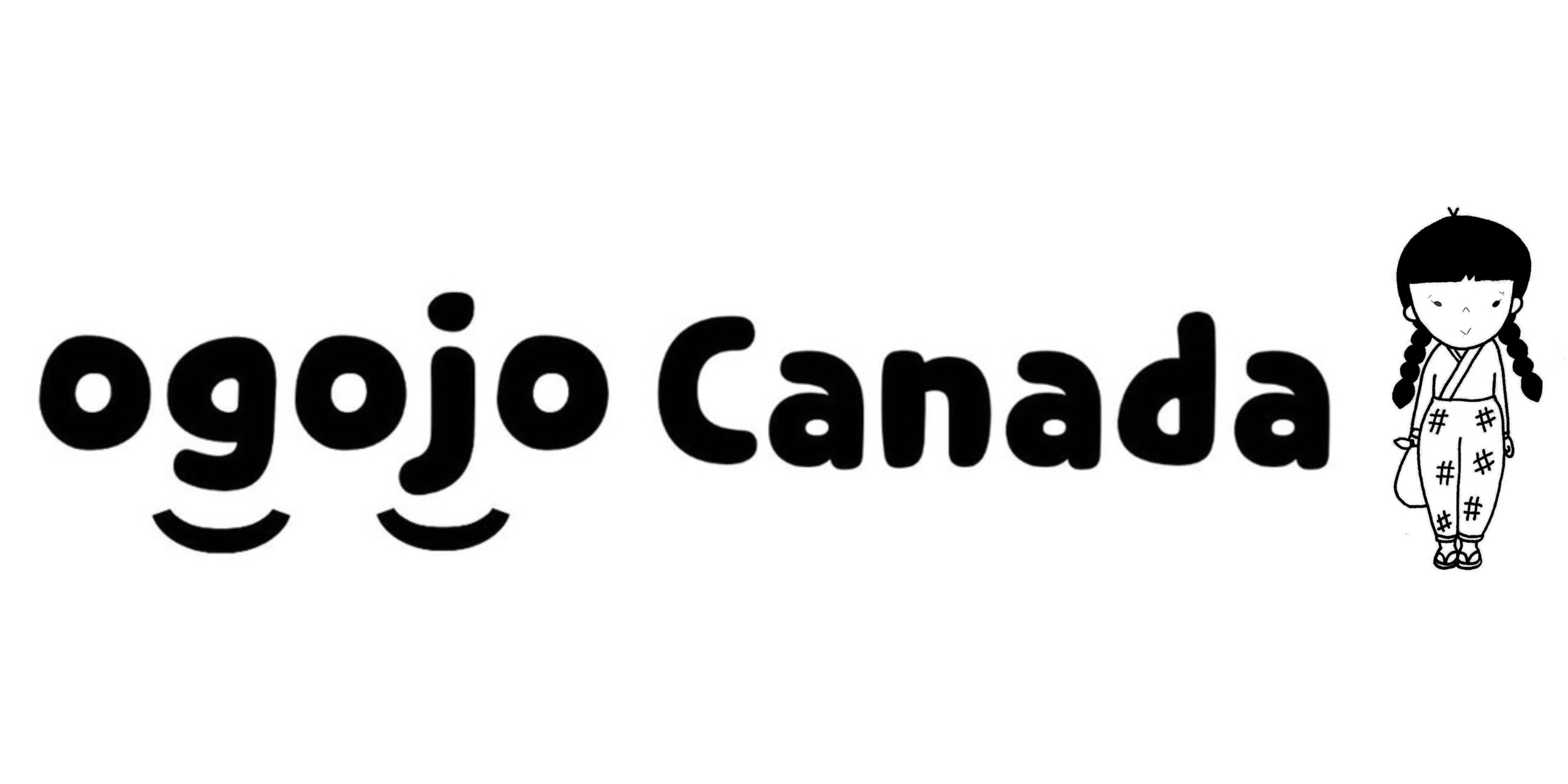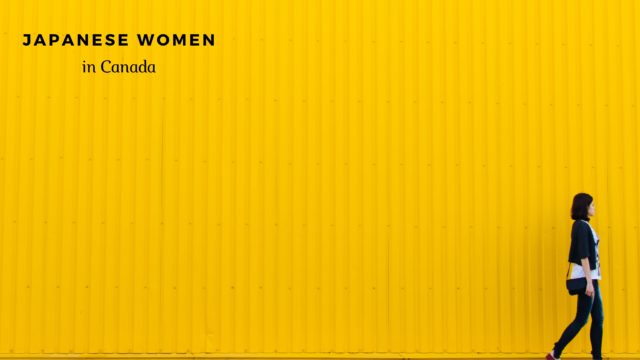- How long have you lived in Canada? What made you come here?
- Why did you decide to go to college after your working holiday?
- Please tell us about your current job.
- What do you like to do?
- What was the hardest thing about coming to Canada? What did you learn from it?
- Is there anything that you would like to do in the future?
- What is your motto?
- Finally, do you have any message to those who are trying to do something?
- Editor’s Comment
How long have you lived in Canada? What made you come here?
I first came to Victoria in July 1999 to study English with zero English.
My father was an alcoholic and abusive. On Christmas Day of my sophomore year of high school, I escaped with my mother for my life. During the divorce settlement, I was not allowed to go to high school and had to voluntarily drop out. Since I was living with my mother, I tried to become a hairdresser as an apprentice to get a job, but my skin was too weak and that path was closed to me. At the age of 19, when I was working part-time while going to high school on a part-time basis, my father died in a car accident and I received some money. I was spending my time giving up on my education and dreams, but I didn’t want to spend that money on clothes and such things, so I thought about what to do and decided to go abroad. I chose Canada because I thought I could snowboard here.
I was planning to go for two months at first, but I was so hooked on Canada that I changed my visa from a tourist visa to a student visa and extended my stay. After that, I went back to Japan once to save money and came back for a working holiday.

What is your favorite part of Victoria?
People are very friendly in Victoria. In Vancouver, it was very convenient to have all kinds of Japanese goods and services, but there were times when I thought it didn’t have to be so convenient. Even in Victoria, there is a good Japanese restaurant and a few places to buy Japanese groceries, and I like that it is not too big or too urban.
Why did you decide you wanted to live in Canada after your first visit to Victoria?
I think I was having so much fun. I went through a lot of hardships as a child and grew up not being able to go to high school properly. I felt liberated when I came here as an adult. I thought that people would accept me like this. In Japan, I wanted to be different from others by having blond hair and lots of piercings. I didn’t have a steady full time job either. It was a painful feeling to not feel accepted by the people around me.
In Japan, people who are not disabled use the parking lot for disabled people and young people sit in the priority seats on the train. When I came to Canada, I saw young people spontaneously giving up their seats, and I thought it was great that they could do that, and if I had children, I would like to raise them here.

Why did you decide to go to college after your working holiday?
At a time when I had no skills and was unsure of what I wanted to do, I met a colleague and found my dream and what I wanted to do.
When I came back on a working holiday, I wanted to work using English, so I went to work at Fortress Mountain in Alberta. I had a co-worker there who was deaf. When I saw her talking to her boyfriend remotely in sign language, I was like, “Wow! That’s so cool!”.
My colleague taught me a little sign language, and when we had a conversation in simple sign language, I knew I wanted to go this way. The first time I had a conversation in sign language, I got goosebumps and thought, “This is it!”.
I talked to one of my Japanese friends who was studying at Medicine Hat College in Alberta, and she told me that they had a sign language course. After a year of ESL at the college, I went straight into the Intervenor program.
What is an intervenor?
Intervenor is not really known by a lot of people. Ms. Anne Sullivan, Helen Keller’s tutor, is an intervener. The job is to connect people with deafblind to society through various communication methods (ASL, SEE, hand signs, etc).
I am currently working as a Braille transcriber. Not many Canadians know about this profession. Also, people think that I can read Braille with my fingers, but I cannot. I read Braille with my eyes.
How was your experience at the college?
I originally wanted to learn sign language, but I decided to do the two-year intervenor program. When I first entered the college, I did not fully understand what intervenors do, but I learned sign language, Braille, and different communication methods at the college.
It was not difficult to enter the college as long as I completed the ESL course, but I was the only Japanese student and there were no other international students in the program, so I had to write and memorize so much that my paper turned black.
We were a single-mother family, so I knew I could not burden my mother financially. At that time, I could only work in the college, so I worked in the school library, cafeteria, shop, and pub. The teachers seemed to know me as they often saw me working here and there.
When I became a sophomore, it became difficult for me to continue my study financially. I told my instructor that I couldn’t stay there anymore. The instructor talked to the program coordinator, and arranged a meeting with the principal. They all saw me working everywhere in the college, and saw my grades. They allowed me to pay in installments. I also received a small scholarship.
The regulations were changed to allow me to work outside the school, so I worked at a group home and a convenience store in the middle of the night. I had homework to do, so I slept only three hours every day, and now I wonder how I managed it.
After completing the two-year program, I successfully graduated in 2007, and my mother came to the graduation ceremony.
Please tell us about your life after graduation.
After graduating from college, I got 2-year work permit. I started working as an intervenor at a group home for people withdeafblind in Vancouver. Intervenors work with clients on a one-on-one basis, and I had a client who was deaf blind, autism and OCD. He was small but strong, so it was difficult for me to deal with him, and I sometimes got bruises on my arms and shoulders.
After I became a permanent resident, I moved to Calgary and worked for the Calgary school board for 6 months, then I got a job at the Alberta Education, so I worked in Edmonton for three years.

Please tell us about your current job.
I’ve loved Victoria since I first came to Canada. I kept sending my resume to Victoria, I was hired to be a Braille transcriber for my current student and moved here. I have been supporting her since she was in kindergarten, and now I am working at the high school since she started high school in September.
Working for the government would have been better in terms of salary, benefits, etc., but I was in love with Victoria, so I changed jobs. Victoria is expensive to live in and the salary was lower than what I used to make in Edmonton, so I worked in a restaurant on weekends right after I moved here. The school didn’t have any work during the summer vacation, so I got some contract work from Alberta Education.
Why did you choose to become a Braille transcriber as a career?
In the end, I did not go into sign language. I thought that you need to understand English 100% to be a sign language interpreter. Sign language is different from English in terms of grammar. When I thought about whether I could interpret sign language in life-threatening situations, such as in the medical field, I was worried and did not have confidence.
While I was at college, my teacher recommended that I move on to Braille because I could do Braille better than other students. There are many rules in Braille, but people who understand English seem to think deeply about them. For me, English is not my mother tongue, so I simply follow the rules and type Braille. Braille is a combination of dots that form letters and symbols, and I enjoy typing it, I feel like I am typing a cipher. Since I am not 100% fluent in English, I thought it would be disadvantageous for me to get a job, so I studied on my own and got a braille certification that can be used throughout Canada called CNIB. It is a must to have that certification if you want to work as a Braille transcriber.

What does a Braille Transcriber do?
I translate textbooks and other class materials into Braille.
A printed textbook of 300 pages becomes over 30 books in braille. Braille has a fixed size, we cannot make the letters smaller. There are also graphs and diagrams, so the number of pages increases. For example, maps. A single map contains information about countries, cities, rivers, mountains, etc. For people with visually impaired, a map that has all the information on one page is impossible to read. A map sometimes becomes five or six pages, because the information on the map has to be divided.
If it’s just text, such as a novel, I can change it from a PDF file to a word file and put it into braille software to convert it automatically. Still proofreading is required, but it doesn’t take too long to complete. When it comes to math, science and chemistry, there are a lot of diagrams to be described/created. I also have to transcribe exams. In social studies tests, there are questions that ask for a picture of a person. I have to look at the picture and explain the gender, clothing, time period, and background so the student can answer. I have to transcribe materials in French as well. I don’t understand French at all, so I need to use Google Translate to look up the meaning. I don’t even know the words, so I have to check every single letter, which takes a lot of time to proofread. Some of the teachers think that I can use Braille software to quickly convert the text into braille, so they hand me the text and tell me they need it in 5 minutes, but I can’t do that.

What do you like to do?
I like to do handstands. It’s fun to go upside down. When you are upside down, your head feels clearer, and good for anti-aging. The combo of yoga and handstands makes my core stronger and builds my inner muscles.
How did you start doing handstands?
I went to a yoga class, and the person next to me was doing handstands. I thought it was cool. I asked him about it, and he was a yoga teacher. After attending his yoga classes, I thought that I wanted to be better at handstands, so I started taking training from professional circus performers. After 5 years of training with my coach, I got an offer to coach foundation class at the studio. During the summer, I also do online handstand lessons to Japanese people.
Check out Mika’s Instagram!

What was the hardest thing about coming to Canada? What did you learn from it?
When I was in college, I was working five jobs and I had to be a top student in my program to get a scholarship. I was spending all my time working and studying, not sleeping. It was hard, and I don’t think I can do it now. But because of the time in the college, it led to my life now. If I hadn’t worked so hard back then, I wouldn’t be here now.

Is there anything that you would like to do in the future?
I started a tea ceremony in November. I have only taken four or five lessons, but it is very fun and deep. When I took my first lesson, I thought that the movements were meaningless, but when the teacher explained the reason, it all made sense. I realized that every movement in the tea ceremony has a meaning and is part of Japanese culture itself.
Where do you feel it is Japanese culture itself?
I realized that many Japanese people are able to move flexibly. It’s a national trait for us. I have always wondered why this is, but when I learned about the tea ceremony and saw how each movement has a meaning and how all the movements are connected. All movements are very respectful for everyone in the room. I thought that this kind of culture has been around for a long time and that is why we have such a national trait. I feel that if I can master this, I will be able to see something.
Why did you decide to try the tea ceremony?
My husband is Serbian. He loves Japan and is very respectful to Japanese culture. One day, he suddenly started learning the shamisen. On my Instagram, I collaborate with my husband’s shamisen, so please have a look. At first, he couldn’t even read music, but he practiced a lot and became quite good at it. He learned kendo and judo before, so he knows more about Japanese etiquette than I do. Seeing my husband, I felt ashamed of myself for not knowing proper etiquette; I had been abroad since I was 20 years old and couldn’t even speak polite expressions properly. Now that I am learning the tea ceremony, I am learning how to speak properly by listening to the way my teacher and other students speak. Since I started learning the tea ceremony, and learned about my own culture, I feel glad that I am Japanese and I am proud of my nationality.

What is your motto?

Strong heart. I have a tattoo on my left wrist. There was a time when I was taking my life for granted and was hurting myself. Whenever I saw the scars that still remain, I felt gloomy, so I got a tattoo over it. I wanted to live my life with a strong heart,and that’s why I put “強心(Strong Heart)” on the scar. This tattoo has helped me a lot mentally.
Recently, I got a tattoo that says, “生きろ(stay alive)” on my right wrist. I also have Koi fish tattoo on my left arm. When I do handstands, it looks like a climbing carp. The larger koi is my husband and the smaller one is me. It means that no matter what rough seas come our way, we will overcome them together.
I have many other tattoos, but they all have their own meanings. It’s hard to get people to understand me in Japan as tattoos are still taboo there. There have been times when I’ve been refused entry to cafes or yoga studios. It would be hard for me to live in Japan.
I try to hide my tattoos when I am with my mother in Japan. My mother used to be against tattoos. She says that I don’t have to hide it. She told me that she is proud of me.
Finally, do you have any message to those who are trying to do something?
I believe effort will pay off. Whether it’s studying, lessons, hobbies, or life, I think it’s important to make an effort in the direction you want to go. Sometimes things don’t work out, and sometimes something gets in the way, but I believe that as long as you keep going in the direction you want to go, you will get there even if you may have to take a detour.
Thank you very much!

Editor’s Comment
I was touched by Mika’s journey so far, as she had a painful experience as a child and gradually regained herself after coming to Canada as an adult. I was inspired by Mika’s attitude of going all the way to the end of what she was interested in and wanted to do, and it made me want to try many things myself. I am looking forward to hearing what she sees when she masters the tea ceremony.











